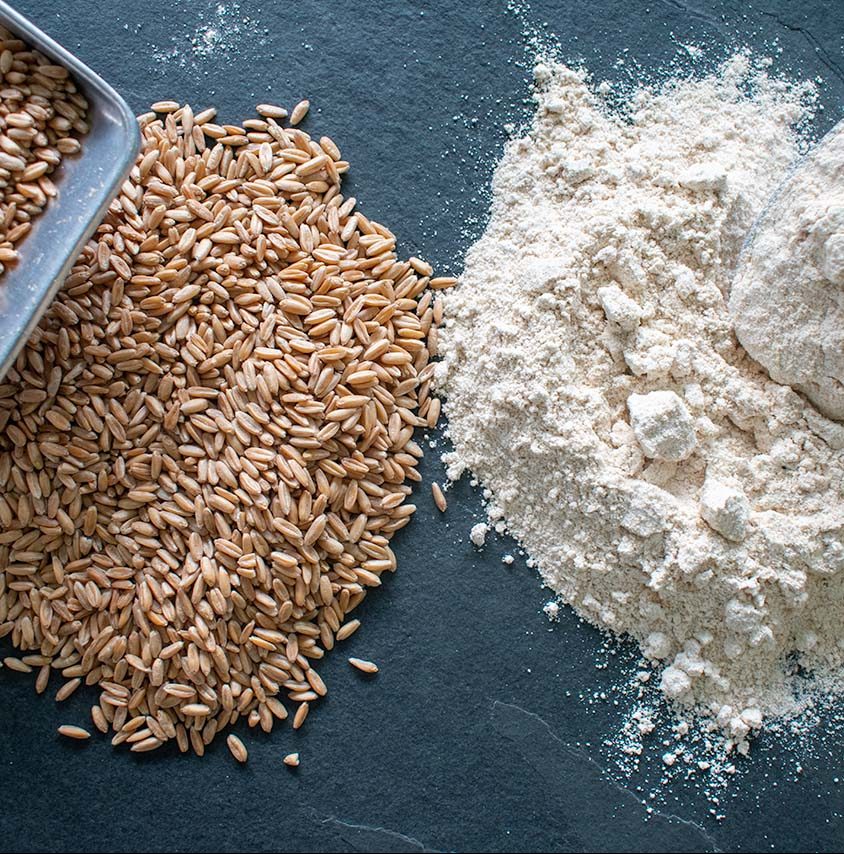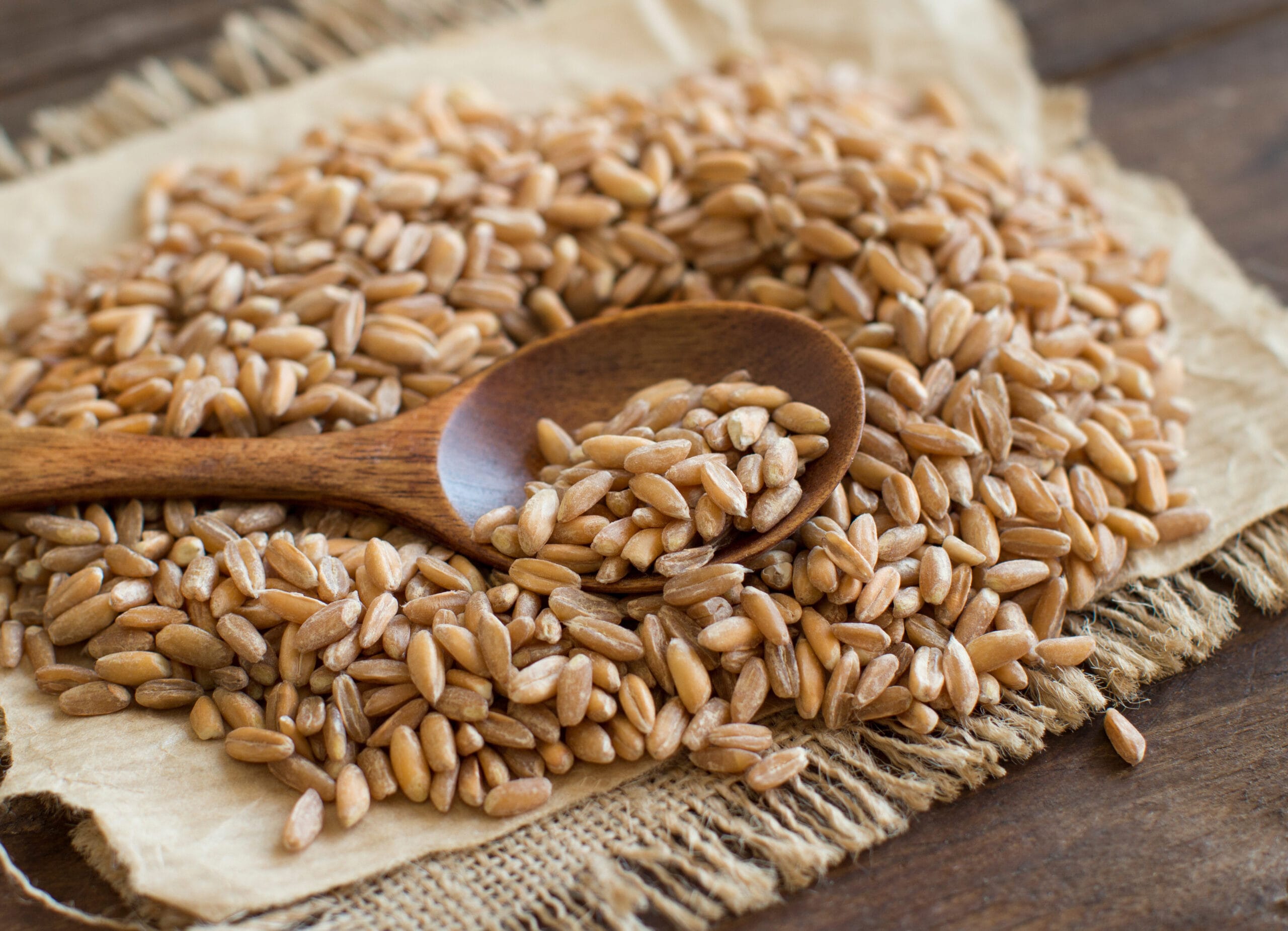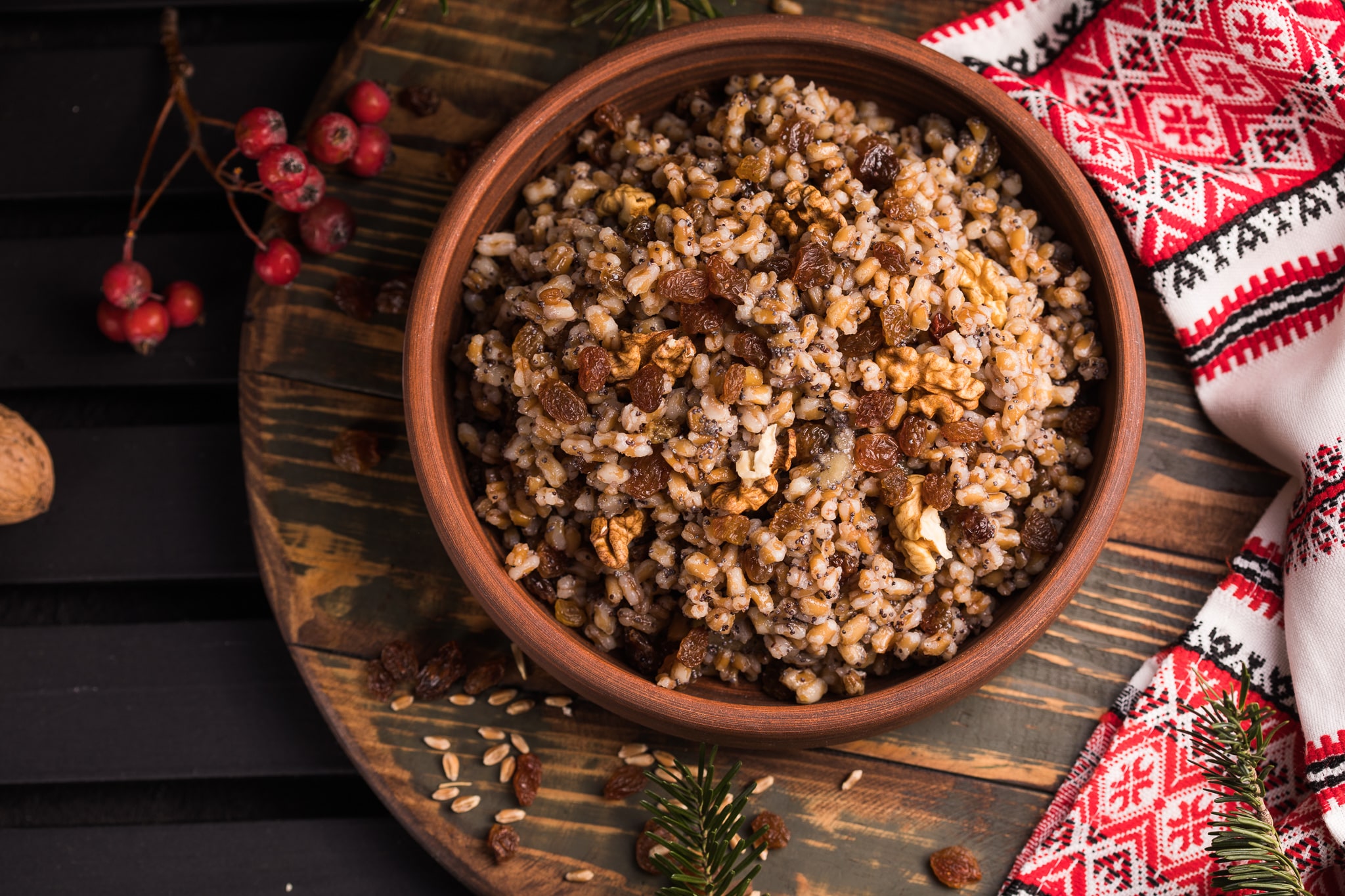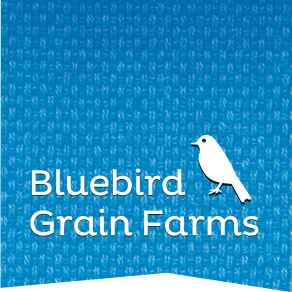
Spelt: youngest of the bunch.
Let’s learn some facts about Spelt. Scientifically known as Triticum spelta. Among the trio of ancient wheats, it stands as the youngest, born from a cross between emmer and a wild grass. It is the latest addition to the Bluebird product line, meaning you can now acquire all of your ancient grains from our farm. Not all spelt is created equal. Bluebird Spelt is a ancient variety that came from the University of North Dakota who has been preserving and maintaining landrace varieties of Spelt. Bluebird Spelt is harvested in the hull and has to be de-husked before human consumption, unlike modernized hulless spelt that has been hybridized for industrial agriculture. Are hulless varieties a true ancient grain? We will leave that up to you to decide. Our focus is preserving and maintaining ancient varieties.
Spelt’s nutrient-rich properties enhance baked goods with its high protein and fiber supporting better digestion. Both as a crop and as a food, it nourishes well-being, enriches fertile soils, and promotes a climate-resilient future with its time-tested ancestral genetics.

Spelt vs. Wheat
Unlike common wheat, spelt has not undergone widespread cultivation, resulting in fewer genetic modifications from domestication, with only 42 chromosomes. Like einkorn and emmer, spelt has the outer husk that protects the kernel which is a main differentiator between ancient and modern wheats.
Spelt is an excellent substitute for common whole wheat bread flour, making it the favored ancient grain for yeast and sourdough breads. Additionally, while it is not gluten-free, it contains less gluten and a lower glycemic index than modern wheat, making it an excellent choice for those seeking healthier alternatives to standard wheat products.
Spelt vs. the other Ancient Wheats
Spelt is a slightly more complex grain than Emmer (Triticum dicoccum) with a 42 chromosome count and differentiating flavor profile. Emmer yields a rich nutty flavor, while spelt is sweet and malty. In terms of appearance, spelt has a distinctive rounded shape, setting it apart from the robust rust-colored kernel of emmer or the petite blonde kernel of Einkorn. It produces a softer, slightly more glutenous dough than the other ancient wheat varieties, which makes it an easier product to bake with, especially when just beginning to explore the ancient grains.

Fun Facts about Spelt
- Cultivated since the Bronze Age (c. 3300 BC)
- A staple food in Europe for centuries.
- Known as dinkel in Germany, where it is very popular.
- Can contain 20%+ Daily Value for protein and several B vitamins.

